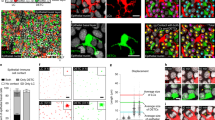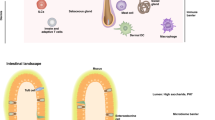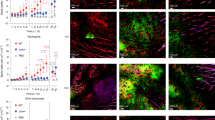Abstract
THE outermost covering of the body, the epidermis, is a thin epithelial sheath comprising three distinct cell types, keratinocytes, melanocytes and Langerhans cells. The physicochemical and photo-protective role of the first two is well known, but the function of the third is still unknown, over a hundred years since its discovery1. The Langerhans cell was reported earlier as having a sensory role, or as being an effete form of the dendritic malanocyte below it2, but it occurs in the dermis3 and is mesenchymal, rather than neuroectodermal, in origin. Its fine structure reveals no melanin, but distinctive racquet-shaped granules. It has also been proposed that it is a macrophage4 or that it may be involved in keratinisation, but recent evidence has suggested an immune function for the Langerhans cell in the development of contact dermatitis5,6. To investigate this possibility, we have exposed separated epidermal sheets to metals, aldehydes and amines known to act as contact antigens, and have observed their distribution histologically. We report here the selective uptake of antigens causing allergic contact dermatitis by Langerhans cells of the epidermis in guinea pigs and man.
This is a preview of subscription content, access via your institution
Access options
Subscribe to this journal
Receive 51 print issues and online access
$199.00 per year
only $3.90 per issue
Buy this article
- Purchase on Springer Link
- Instant access to full article PDF
Prices may be subject to local taxes which are calculated during checkout
Similar content being viewed by others
References
Langerhans, P., Virchows Arch. path. Anat. Physiol., 44, 325–337 (1868).
Billingham, R. E., and Medawar, P. B., Trans. R. Soc., B 237, 151–171 (1953).
Wolff, K., in Current Problems in Dermatology, 4 (edit. by Mali, J. W. H.), 79–145 (Karger, New York, 1972).
Riley, P. A., in The Physiology and Pathophysiology of the Skin, 3 (edit. by Jarrett, A.), 1199–1218 (Academic, New York, 1974).
Silberberg, I., Acta derm.-Vener., Stockh., 53, 1–12 (1973).
Silberberg, I., Baer, R. L., Rosenthal, S. A., Thorbecke, G. J., and Berezowsky, V., Cell Immunl., 18, 435–453 (1975).
MacKenzie, I. C., and Squier, C. A., Br. J. Derm., 92, 523–533 (1975).
Stuart, A. E., in Clinical Aspects of Immunology, 3rd ed. (edit. by Cell, P. G. H., Coombs, R. R. A., and Lachmann, P. J.), 365–409 (Blackwell, London, 1975).
Vernon-Roberts, B., The Macrophage (Cambridge University Press, London, 1972).
Nossal, G. J. V., Ada, G. L., and Pye, J., Aust. J. exp. Biol. med. Sci., 42, 295–310 (1964).
Author information
Authors and Affiliations
Rights and permissions
About this article
Cite this article
SHELLEY, W., JUHLIN, L. Langerhans cells form a reticuloepithelial trap for external contact antigens. Nature 261, 46–47 (1976). https://doi.org/10.1038/261046a0
Received:
Accepted:
Issue Date:
DOI: https://doi.org/10.1038/261046a0
This article is cited by
-
Ontogeny and homeostasis of Langerhans cells
Immunology & Cell Biology (2010)
-
Phagocytic and lysosomal activity in Langerhans cells from sensitized guinea pigs
Medical Electron Microscopy (1996)
-
Adhesion molecule expression by epidermal Langerhans cells and lymph node dendritic cells: a comparison
Archives of Dermatological Research (1996)
-
Pathways of dendritic cell differentiation and development
Eye (1995)
-
Foot and mouth disease virus replication in bovine skin Langerhans cells under in vitro conditions detected by RT-PCR
Virus Genes (1995)
Comments
By submitting a comment you agree to abide by our Terms and Community Guidelines. If you find something abusive or that does not comply with our terms or guidelines please flag it as inappropriate.



